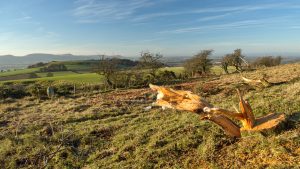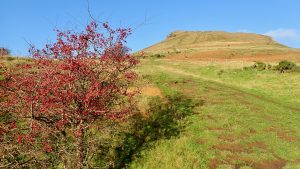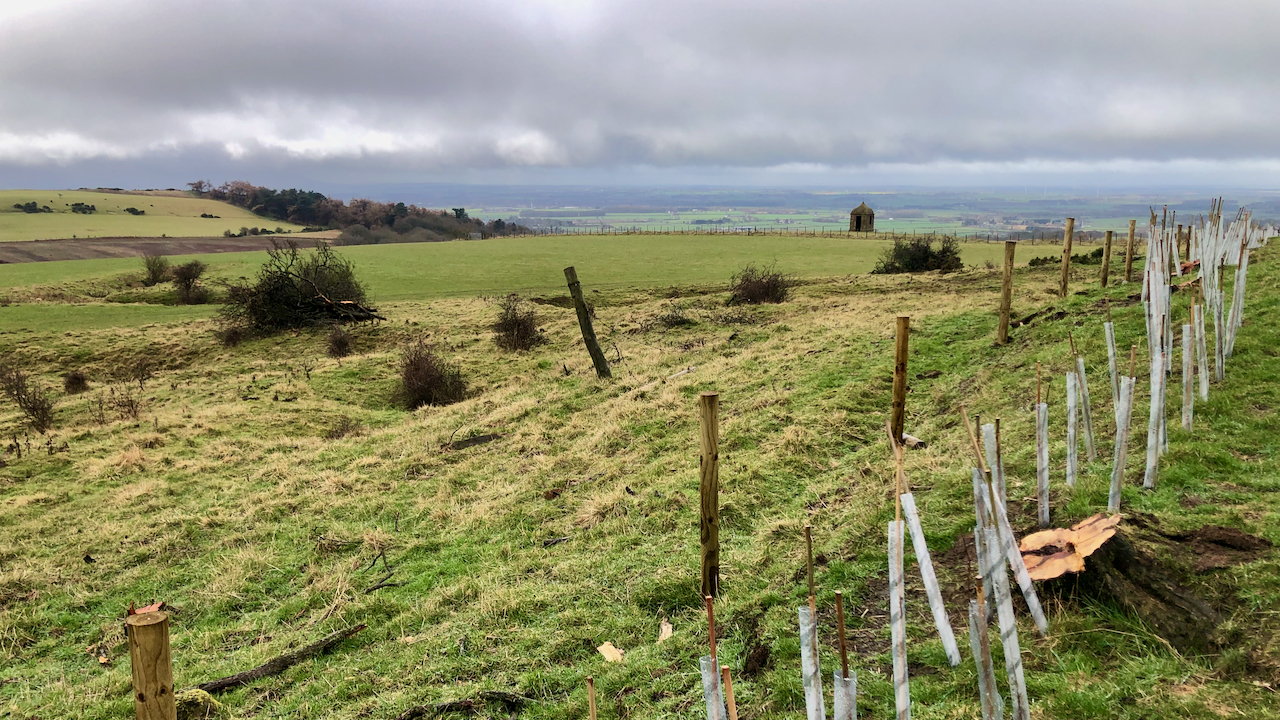Three years ago I lamented on the felling of a patch of semi-open woodland on the southern flank of Roseberry Topping.
It was a parcel of scattered trees, mostly Hawthorn, the felling of which was a significant loss, not only in terms of its wild beauty but also its ecological importance. Hawthorn trees provide food, shelter, and nesting sites for a variety of wildlife, including many birds and insects. Their dense growth acting as a natural shelter against the elements.

But on the far side of the boundary fence, a few stragglers were left, perhaps remnants of the original 18th-century hedgerow planted when the land was enclosed. Walking the hedge has been one of my regular ways back home, especially when avoiding the summit crowds. In winter, flocks of what I later learned to be Fieldfare have often guided me, feeding on the abundant haws and flitting from tree to tree before swirling back behind me. I am told, although I haven’t seen any myself, that Green woodpeckers and Ring ouzels have also been sighted — presumably the latter taking a well-earned rest before continuing their migration to their breeding sites on the high moors.

So I was disappointed to discover that this relict hedgerow itself has now been felled and replaced by a double row of saplings each protected within its little plastic tube.
Why?
Why cut down mature trees only to replace them with saplings which may take a decade to reach any size? Surely, even if mature Hawthorns can not successfully be layered, they could still be left as standards, with saplings filling the gaps.
To see a hedge of Hawthorn cut down is to witness the destruction of a living ecosystem. Maybe it was done for practical reasons, what though I can not imagine. The loss of such a habitat must have far-reaching consequences, not just for the wildlife that depended on it, but also for the wider environment.

Leave a Reply